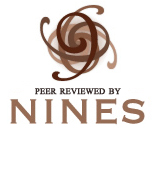
D.G. Rossetti’s “The Burden of Nineveh”: Further Excavations

Scott and Smyth. "Nimroud Scupltures Just Received at the British Museum."
Engraving. From Illustrated London News, Oct 26, 1850: 332.
|
Further, when years later he did put together such a volume, “The Burden of Nineveh” had a kind of priority in Rossetti’s mind. In an October 1869 letter to Alicia Losh, during the run-up to the publication of the 1870 Poems, he wrote, “The ‘Nineveh’ I reckon on as destined probably to be the most generally popular thing in the book. I do not regard it with indifference myself, but am inclined to give the preference to the more emotional order of subject”(Correspondence 69.186). Indeed, the question of preference is interesting with regard to the ordering of Rossetti’s poems. In the 1881 edition of his Poems, for example, “The Burden of Nineveh” is seventeenth, but in the 1870 Poems, it appears fourth. Indeed, the poem hovered in third position in the early proofs (i.e., the Penkill, A, and A2 proofs, all dating from August and September of 1869), and after the final proofs for the first edition were printed on March 1, 1870, Rossetti wrote to his publisher F.S. Ellis asking him to move “Nineveh” up to third position again:

